There was a formative turning point early in my career as a guitarist when I encountered a sound both haunting and lyrically compelling—the Aeolian scale. Rather than a mere series of notes, it soon unfolded as the backbone underpinning an immense range of emotion and style, uniting disciplines from classical to jazz and contemporary genres. Decades spent analyzing music theory and instructing students have confirmed that the Aeolian scale is fundamental for expressive phrasing and harmonic nuance within guitar playing—serving as a practical bridge between theoretical knowledge and emotive storytelling. This article synthesizes practical insights and research-based understanding to offer a comprehensive roadmap for mastering the Aeolian scale, highlighting both its profound usefulness and its boundaries, so guitarists at any stage can leverage it to enhance their musical vocabulary and identity.
My own exploration began with the pressing question of how to translate theoretical concepts into authentic musical expression. With the Aeolian scale as a central toolkit element, I charted new creative territory—across genres and technical challenges—finding that true mastery involved a continual interplay between structured learning and artistic curiosity. Here, I’ll distill my findings for players eager to enrich their musicianship with both logic and feeling.
What Is the Aeolian Scale? Understanding Its Musical Foundations
Defining Aeolian: The Natural Minor Scale Demystified
Few elements are as foundational in Western tonal music as the Aeolian scale, which defines the modern conception of minor tonality. In fact, the Aeolian is more commonly referred to as the natural minor scale—a point consistently underscored in musicological research and practical harmony guides. The Aeolian’s formula—whole, half, whole, whole, half, whole, whole—imparts its signature melancholic quality, with the flattened third, sixth, and seventh intervals widely recognized for evoking emotional tension and introspection (source). What is less often discussed, however, is its subtle, flexible role in melody and harmony: while its structure appears simple when compared to modes such as Dorian or Phrygian, that very simplicity grants a nuanced palette for both composition and improvisation. Admittedly, the Aeolian’s tonal consistency can become restrictive if used solely—many learners express frustration with perceived monotony—but this “limitation” can, paradoxically, fuel creativity by challenging guitarists to discover fresh phrasing and chromatic interplay within its framework.
Comparing Aeolian to Other Guitar Modes
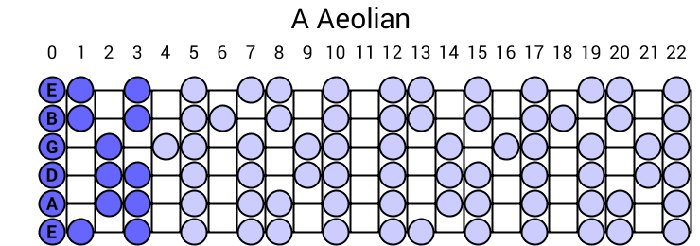
The Aeolian mode’s enduring appeal across styles—from classic rock to modern jazz—hinges on its capacity for emotional storytelling. What distinguishes Aeolian from other modes is not simply its intervallic makeup, but the specific character it imparts: compared to the Dorian mode (which features a major sixth and is favored in funk or fusion for its sense of lift), or Mixolydian (with a major third and minor seventh lending a bluesy or roots-rock flavor), Aeolian is defined by the introspective, slightly somber mood linked to its minor intervals. As documented in studies on mode and emotional association, listeners consistently associate Aeolian with feelings of sadness or longing. Ionian (the major scale), conversely, is correlated with joy, optimism, and tonal stability, emphasizing why Aeolian holds such a critical place for composers and improvisers seeking a balance between tension and resolution. Yet, the risk in favoring Aeolian is settling into a predictable “minor mood”—highlighting the importance of combining it judiciously with other modes for contrast and breadth.
Why Learn the Aeolian Scale on Guitar?
Musical Expression and Songwriting Applications
Research in music psychology has confirmed the Aeolian scale’s efficacy for conveying nuanced emotion; it remains a staple of countless iconic songs (e.g., REM’s “Losing My Religion” or Metallica’s “Nothing Else Matters”), testifying to its expressive power. The Aeolian’s intervallic shape enables unique chord progressions—such as i–bVI–bVII or i–iv–bVII—that underpin dramatic storytelling and persistent musical motifs. However, scholarship also warns of creative stagnation: overdependence on a single scale or tonal center can limit harmonic diversity. In practice, rotating Aeolian with other scales and experimenting with modal interchange (borrowing chords or scales from parallel modes) prevents compositional predictability, keeping songwriting fresh and engaging.
The Aeolian Scale’s Role in Genres & Improvisation
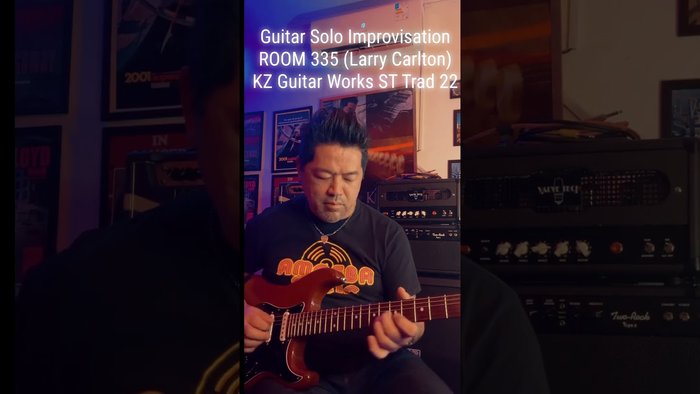
Across genres—blues, classic metal, modern pop, and even jazz fusion—the Aeolian scale is a critical engine of melodic invention. Its adaptability is well documented: Joe Satriani, Larry Carlton, and Carlos Santana have all cited the scale’s role in shaping signature improvisational moments. However, effective use of Aeolian in improvisation depends on contextual listening and an awareness of the song’s underlying harmony. For example, targeting the b6 and b7 inflections can infuse lines with tension, but indiscriminate scale usage can drown out rhythmic subtleties or clash with underlying chords. Academic research into improvisational pedagogy emphasizes that meaningful improvisation involves more than note selection; it’s about constructing motifs, responding dynamically to harmonic changes, and engaging the listener’s emotions.
Where to Start: Fretboard Navigation and Essential Diagrams
Essential Aeolian Scale Diagrams and Patterns
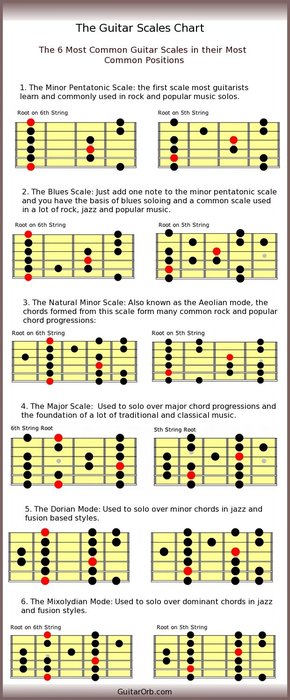
Fretboard literacy is a vital skill for guitarists pursuing both technical fluency and creative spontaneity. Guitar pedagogy widely acknowledges that learning five interconnected Aeolian patterns (often called “CAGED” shapes) provides access to every Aeolian note on the instrument, aligning with findings from leading guitar method texts and neurocognitive studies of pattern recognition. For instance, research highlights how internalizing these five scale forms facilitates efficient improvisation across all positions, improving confidence and reducing mental fatigue. At the same time, over-rigid pattern memorization can hinder musical expression; the most effective practice balances diagram study with active contextual application. Instead of rote repetition, students benefit from employing patterns as springboards for exploring intervallic variation, phrasing, and modal stacking within real songs and jams.
Mapping the Scale Across the Guitar Neck

True mastery involves knowing every Aeolian note—regardless of position or key—on the neck. Expert guitarists frequently employ methods such as “landmark notes” and “interval mapping” to visualize modal networks across the fretboard. This approach not only enhances theoretical awareness (enabling quick modulation or modal interchange) but also fosters technical agility. However, studies in music education caution against “box pattern” confinement: players who neglect fretboard mapping risk restricting their phrasing to habitual zones, missing broader melodic possibilities. Deliberate practice—such as shifting motifs up and down the neck, or transposing patterns on the fly—is recommended for developing comprehensive scale fluency and expanding expressive options.
When and How to Use the Aeolian Scale: Practical Guitar Lessons
Applying the Aeolian Scale to Chord Progressions
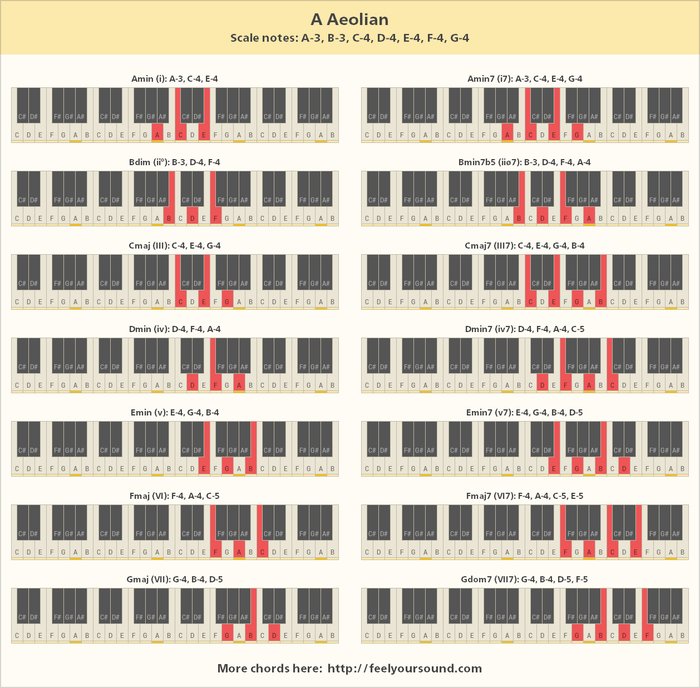
The practical application of the Aeolian scale in chord progressions is a classic driver of emotional intensity. Its characteristic progressions—such as i–bVI–bVII—directly inform a wide array of genres, fueling everything from evocative ballads to epic rock anthems (see examples in songwriting analysis). Objective assessment reveals the scale’s strengths—cohesion, harmonic clarity, and melodic tension—but also its risks: sticking solely with predictable Aeolian harmonies may limit inventive composition. Incremental variation—like reharmonizing progressions with borrowed chords or experimenting with modal mixture—can reinvigorate familiar structures. Research in jazz harmony supports the adaptive reuse of Aeolian progressions as “platforms” for expanded experimentation, underpinning both stable hooks and extended improvisations.
Building Melodic Guitar Licks and Improvisation Techniques

Effective improvisers move beyond rote scale sequences—crafting melodic “stories” through the Aeolian mode is as much about intention as it is about technical facility. Contemporary pedagogy (such as at Berklee or through leading improvisation courses) emphasizes motif development, call-and-response, and thematic variation as keys to musical phrasing (see Berklee resources). By focusing on intervallic leaps, rhythmic diversity, and dynamic contrast, guitarists can transform the Aeolian scale from a mere technical exercise into expressive improvisational statements. However, research and teaching experience highlight a recurring pitfall: excessive scale runs can quickly become monotonous or overbearing. The remedy lies in balance—grounded creativity, disciplined restraint, and a constant dialogue with the underlying harmony—resulting in licks that function not only as virtuosic displays but as authentic, cohesive narratives within the music (read more about improvisational phrasing).
Who Should Learn the Aeolian Scale? Player Profiles & Real-World Impact
Beginner, Intermediate, or Advanced: Is the Aeolian Scale for You?
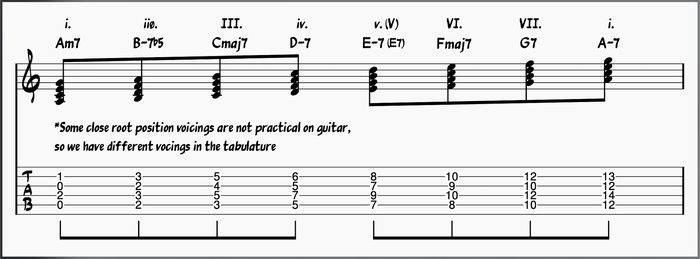
The Aeolian scale serves as a versatile resource across the guitarist’s developmental arc. For beginners, it provides clear melodic and harmonic building blocks, facilitating early improvisational efforts and fostering recognizing patterns on the fretboard. Intermediate players can access richer emotional shading and begin to interlace Aeolian patterns with pentatonic or modal elements for greater intricacy. Advanced musicians exploit its colorations for seamless modal shifts and nuanced phrase development. Instructional data show that early engagement with Aeolian concepts builds confidence, while advanced integration correlates with greater stylistic sophistication. Nonetheless, some advanced players may outgrow isolated modal focus and shift toward expanded harmonic frameworks—such as advanced modal mixture or chromaticism—to keep their musical language evolving.
How Mastering Aeolian Enhances Your Musical Identity

Mastery of the Aeolian scale is a pivotal step toward forming a personal, identifiable style on the guitar. For many players, investing time in the Aeolian unlocks not only technical fluency but also a deeper emotional repertoire—allowing subtlety and authenticity in creative output. Academic and anecdotal evidence point to the Aeolian’s role in developing signature phrasing; it enables guitarists to communicate mood and character, standing out amid homogenized musical trends. That said, a holistic approach is critical. A balanced technique, combining the Aeolian with other scales and concepts (such as modal interchange or advanced rhythmic groupings), ensures your voice retains freshness. Musicians should also remain mindful of maintaining contrast—interspersing Aeolian’s inherent somberness with brighter passages from major or Dorian modes to sustain listener engagement and sectional clarity.
FAQs: Aeolian Scale Guitar Questions Answered
What is the Aeolian scale on guitar?
How can I use the Aeolian scale in my playing?
What are some practice tips for mastering the Aeolian scale?
How does the Aeolian scale differ from other scales?
Conclusion: Unlocking New Musical Dimensions With the Aeolian Scale
The Aeolian scale is not simply a technical construct; it is a vehicle for profound, personalized expression. Years of critical study and performance have shown that mastering Aeolian informs both the analytical and affective dimensions of musicianship. Each mapped pattern or improvised run on the fretboard becomes an opportunity for narrative richness and stylistic growth. Still, lasting mastery requires continual experimentation and a willingness to both honor and transcend the scale’s inherent voice. By confronting both its power and its limitations, guitarists can harness the Aeolian to access new artistic frontiers and sustain a dynamic, evolving musical identity.